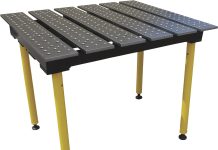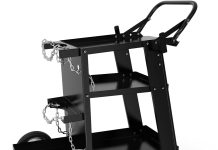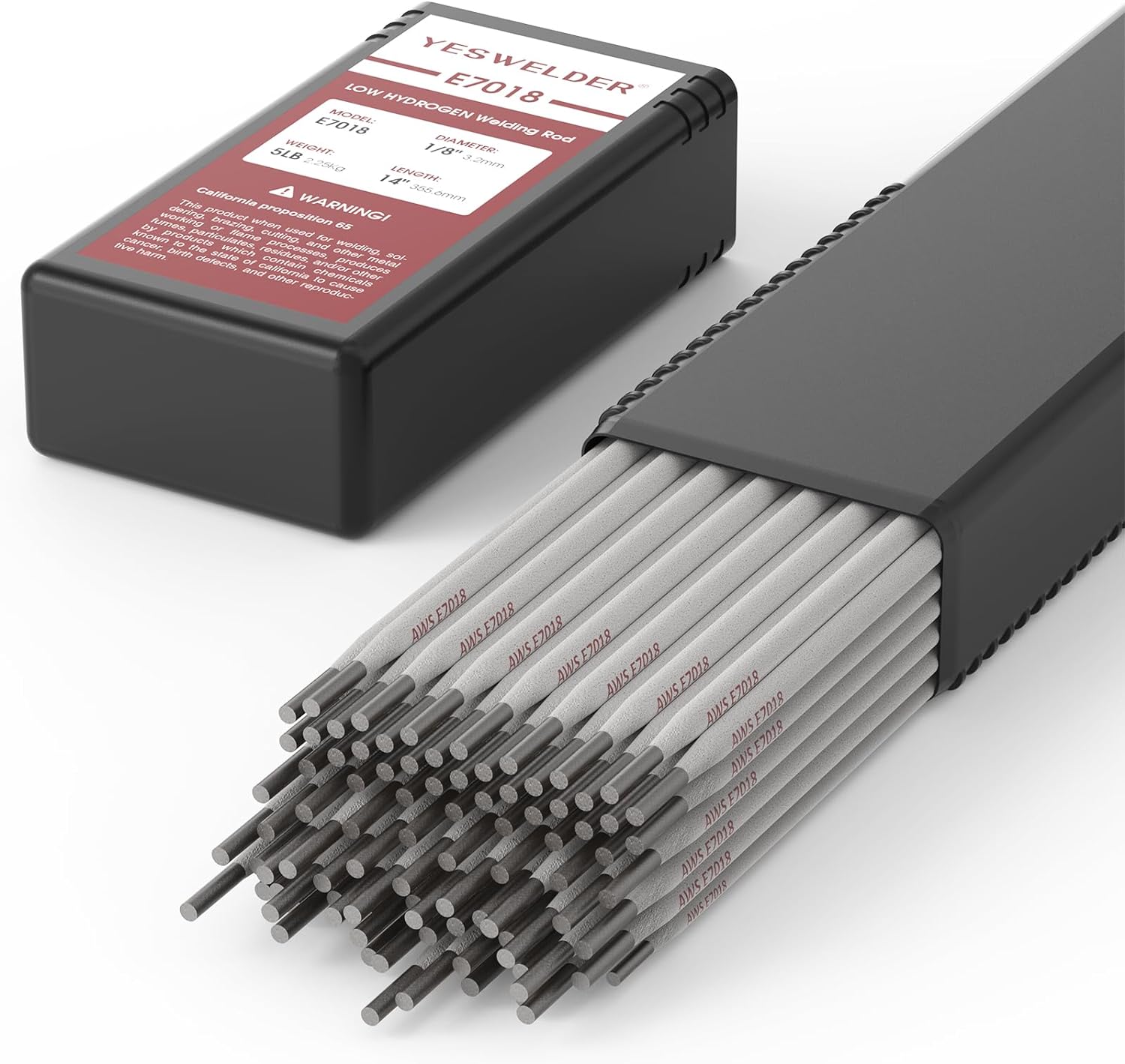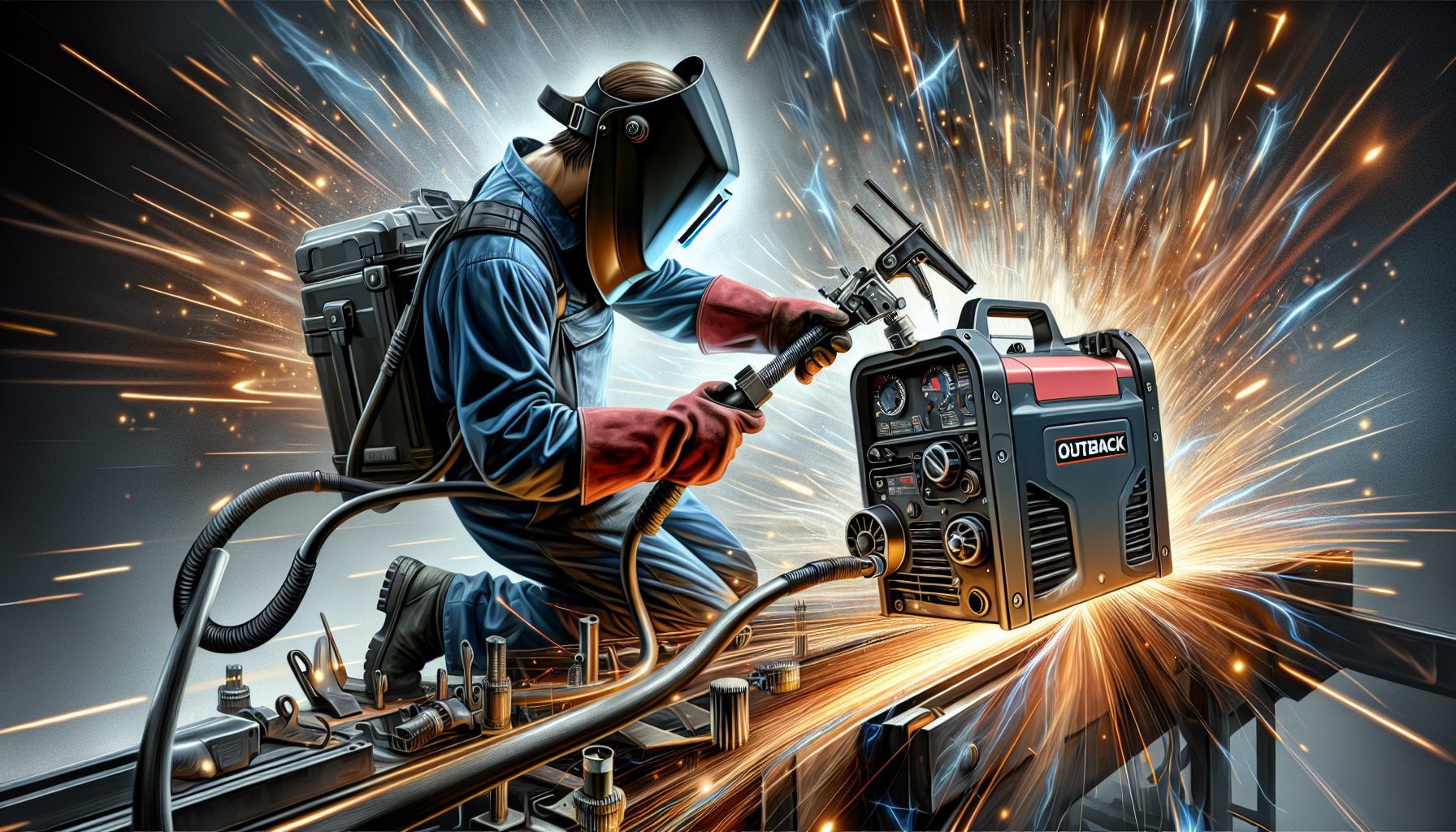Imagine having a welding table that is tailor-made to your exact specifications, perfectly suited to meet all your welding needs. From the size and height to the accessories and features, every aspect can be customized to ensure optimal comfort and efficiency. Not only does building your own DIY welding table provide you with the freedom to design it just the way you want, but it also offers several benefits that extend beyond customization. In this article, we will explore the advantages of building your own welding table, bringing you one step closer to a truly personalized and efficient workspace.
Increased Customization
Design to Suit Your Needs
When you build your own DIY welding table, you have the freedom to design it to suit your specific needs. Whether you’re a professional welder or a hobbyist, having a welding table that caters to your requirements can greatly enhance your overall welding experience. You can customize the size, shape, and layout of the table according to the space available in your workshop or garage. Additionally, you can incorporate specific features that will make your work easier, such as integrated clamps, adjustable fixtures, or even built-in storage compartments for your welding accessories.
Choose Your Dimensions
One of the biggest advantages of building your own welding table is the ability to choose its dimensions. Standard welding tables may not always fit the exact requirements of your project or workspace. By building your own table, you can ensure that it is the perfect size for your needs. Whether you need a compact table for small projects or a larger surface area for bigger tasks, you have the flexibility to create a welding table that suits you perfectly.
Add Custom Features
Another benefit of building your own DIY welding table is the opportunity to incorporate custom features. Unlike off-the-shelf welding tables, which often have limited features and functionality, you can include specific elements that cater to your workflow. For instance, you can add built-in clamps or vices to hold your workpieces securely in place. You can also integrate adjustable fixtures or attachments to accommodate different welding angles or positions. The ability to add these custom features ensures that your welding table is not only functional but also tailored to your unique requirements.
Cost Savings
Lower Initial Investment
Building your own DIY welding table can significantly reduce your initial investment compared to purchasing a pre-made table. Off-the-shelf welding tables can be expensive, especially those made from high-quality materials. By building your own table, you have the opportunity to source affordable materials and save money in the process. Utilizing recycled or reclaimed materials can further reduce costs while still ensuring the durability and functionality of your welding table.
Save on Shipping Costs
When you purchase a ready-made welding table, you not only pay for the table itself but also the shipping and handling costs associated with its delivery. These additional expenses can quickly add up, especially if you’re purchasing a heavy or oversized welding table. By building your own table, you eliminate the need for shipping altogether. You can simply source the materials locally and transport them to your workshop or garage. This not only saves you money but also allows you to choose materials that are readily available and suited to your budget.
Use Affordable Materials
Building your own welding table gives you the freedom to choose affordable materials that still provide the necessary strength and durability. While industrial-grade steel is commonly used for welding tables, it can be expensive. However, there are alternative materials such as heavy-duty lumber or even salvaged steel that can be used to construct a sturdy and reliable welding table at a fraction of the cost. Being able to source affordable materials allows you to build a welding table that meets your needs without breaking the bank.
Enhanced Durability
Select Stronger Materials
When building your own DIY welding table, you have the control to select the materials that best suit your durability requirements. Unlike pre-made welding tables that may use standard materials, you can choose stronger and more durable options. Industrial-grade steel, for example, is known for its strength and resistance to deformation, making it an excellent choice for building a robust welding table. By opting for high-quality materials, you can ensure that your welding table withstands the rigors of welding projects and remains stable and sturdy for years to come.
Build Reinforcements
In addition to selecting durable materials, building your own table allows you to add reinforcements where necessary. Welding tables often undergo significant stress and load during welding operations. By reinforcing critical areas, such as the legs or the main frame, you can increase the overall strength and stability of your table. Reinforcing these areas can prevent excessive flexing or bending, ensuring that your table remains sturdy even under heavy workloads. By incorporating these reinforcements during the construction process, you can create a welding table that is built to last.
Create a Sturdy Frame
The frame of a welding table is the backbone of its stability and durability. When constructing your own welding table, you have the opportunity to build a sturdy frame that can withstand constant use and heavy loads. By using thick and robust materials for the frame, such as thick steel tubing or heavy gauge steel plate, you can ensure that your table remains rigid and stable during welding operations. The sturdiness of the frame is crucial for maintaining accurate welding angles and preventing the table from wobbling or vibrating, which could affect the quality of your welds.
Versatility
Modify for Different Welding Techniques
Building your own DIY welding table allows you to modify it to accommodate different welding techniques. Different welding techniques require different setups and fixtures. By customizing your welding table, you can incorporate features that support specific welding techniques. For example, if you frequently perform TIG welding, you can add a removable stainless steel top to your table to prevent contamination of the workpiece. If you prefer MIG welding, you can include a built-in wire feeder holder for convenience. The ability to modify your table for different welding techniques enhances its versatility and makes it a valuable tool for various welding projects.
Adapt for Other Projects
A DIY welding table is not limited to just welding tasks. By building your own table, you can design it to be adaptable for other projects as well. For instance, you can add a removable wooden top or a vise attachment to convert your welding table into a general workbench. This versatility allows you to maximize the functionality of your welding table and make it a multi-purpose workstation. Whether you’re woodworking, metalworking, or performing general repairs, your DIY welding table can be customized to suit the specific needs of each project.
Multi-Purpose Functionality
In addition to adapting your welding table for other projects, you can also design it to have multiple functions within the welding process itself. For example, you can incorporate a built-in grounding clamp holder to keep your grounding cable neatly organized and easily accessible. You can also add hangers or storage options specifically designed for welding helmets, gloves, and other protective gear. The ability to incorporate these multi-purpose functionalities into your welding table not only enhances efficiency but also helps in maintaining a clean and organized workspace.
Optimal Size and Height
Design for Comfort and Efficiency
When building your own welding table, you have the advantage of designing it for optimal comfort and efficiency. Working for extended periods at an uncomfortable or inefficient work height can be detrimental to your productivity and even lead to physical discomfort. By customizing the size and height of your welding table, you can create a workspace that is ergonomically suited to your body and work style. This ensures that you can weld comfortably without straining your back, neck, or arms, allowing you to work for longer durations effectively.
Choose an Ideal Height
The height of a welding table plays a crucial role in maintaining proper body posture during welding tasks. Different individuals have different heights and working styles, making it essential to have a welding table that can be adjusted to suit individual needs. By building your own welding table, you can customize its height to match your personal preferences. This enables you to achieve the ideal height for welding, minimizing the risk of fatigue or discomfort and promoting better weld quality.
Appropriate Working Surface Size
The size of the working surface on a welding table is equally important as its height. A welding table with a surface that is too small may limit your workspace and restrict your ability to maneuver larger workpieces. On the other hand, a table that is too large may waste valuable floor space in your workshop. By building your own welding table, you have the flexibility to design the surface size to best fit your workspace and the type of projects you commonly work on. This allows for efficient use of space and ensures that your welding table is optimized for your specific needs.
Improved Organization
Incorporate Storage Solutions
A major advantage of building your own DIY welding table is the ability to incorporate tailored storage solutions. Welding often involves a variety of tools, accessories, and consumables that need to be organized and readily accessible. By including storage compartments or drawers in your welding table, you can keep your tools and supplies within arm’s reach, minimizing the time spent searching for items. This improves your workflow efficiency and allows you to maintain a tidy and organized workspace, reducing the risk of accidents or injuries caused by clutter.
Add Tool Holders and Racks
In addition to storage compartments, you can also add tool holders and racks to your DIY welding table. These specially designed holders and racks allow you to hang your welding torch, clamps, wire brushes, and other frequently used tools right at your workstation. This ensures that your tools are always within reach, reducing the time taken to locate them during welding tasks. By keeping your tools organized and easily accessible, you can streamline your workflow and enhance your overall productivity.
Create Dedicated Work Stations
Depending on the variety of welding projects you undertake, it may be beneficial to have dedicated workstations on your welding table. By incorporating dividers or partitions, you can create separate areas for different welding processes or projects. This allows you to maintain an organized workspace by keeping different tools, fixtures, or materials separated and easily identifiable. By having dedicated workstations, you can efficiently switch between projects without wasting time searching for specific tools or fixtures, enhancing your overall efficiency and reducing the risk of mistakes caused by mixing components.
Ease of Maintenance
Access All Areas for Cleaning
Maintaining a clean welding table is essential for ensuring the quality of your welds and prolonging the life of your table. When you build your own DIY welding table, you can design it in a way that allows easy access to all areas for cleaning purposes. By incorporating removable panels or trays, you can easily clean out any debris, metal shavings, or slag that may accumulate during welding. Easy access to all areas of the table simplifies the cleaning process, ensuring that your welding table remains in optimal condition.
Repair or Replace Individual Components
Over time, certain components of a welding table may wear out or get damaged due to the high-temperature environment and constant use. When you build your own table, you have the advantage of being able to repair or replace individual components as needed. Whether it’s replacing a worn-out tabletop or reinforcing a weak leg, the ability to address specific issues allows you to maintain the functionality and structural integrity of your welding table. Additionally, by sourcing affordable materials, repairs or replacements can be done without incurring high costs, extending the lifespan of your DIY welding table.
Simple Surface Maintenance
The surface of a welding table is prone to heat, sparks, and weld splatter, often resulting in surface imperfections. However, when you build your own DIY welding table, you can choose surface materials that are easy to clean and maintain. Options such as a thick metal plate or a heat-treated tabletop can make surface maintenance a breeze. With a simple wipe-down or scraping off any residue, you can keep your welding table clean and free from obstructions that can interfere with your welding process or affect the quality of your welds.
Increased Safety
Secure Welding Fixtures Properly
Having a secure and stable platform for welding fixtures is crucial for your safety. By building your own DIY welding table, you have the control to ensure that all fixtures are securely fastened, minimizing the risk of accidents or injuries caused by loose or unstable fixtures. You can incorporate additional clamping mechanisms or adjustable fixtures to hold your workpieces securely in place, preventing any sudden movements during welding. The ability to ensure proper fixture attachment enhances safety by reducing the chances of workpieces slipping, tipping, or causing damage to the surrounding environment.
Controlled Flames and Sparks
Welding often involves intense heat, flames, and sparks, which can be hazardous if not properly controlled. When you build your own welding table, you can design it with features that help contain and redirect these flames and sparks. For example, you can include fire-resistant materials or coatings that minimize the risk of accidental fires. You can also add strategically placed heat shields or spark deflectors to protect yourself and your surroundings. By incorporating these safety measures, you create a safer work environment for yourself and anyone else in the vicinity.
Safer Work Environment
Building your own DIY welding table allows you to design a workspace that prioritizes safety. By incorporating safety features such as built-in ventilation systems or fume extraction setups, you can minimize the inhalation of hazardous fumes and improve air quality. Additionally, you can design your table to have proper cable management systems to prevent tripping hazards. By ensuring a clutter-free and well-ventilated work environment, you significantly reduce the risk of accidents and injuries, providing a safer workspace for yourself and others.
Acquiring New Skills
Learning Through the Building Process
Building your own DIY welding table is not only a practical endeavor but also an opportunity to acquire new skills. Throughout the construction process, you’ll learn about metalwork principles, such as measuring and cutting materials, joining components, and creating stable structures. You’ll gain hands-on experience in using various tools and techniques that are essential for metal fabrication. This learning experience not only allows you to build your own welding table but also equips you with valuable skills for future metalworking projects.
Understanding Metalwork Principles
By building your own welding table, you’ll gain a deeper understanding of metalwork principles. You’ll become familiar with different types of welding joints, welding processes, and the properties of various metals and materials. This understanding can greatly enhance your ability to make informed decisions when it comes to welding techniques and material selection for future projects. Additionally, it allows you to troubleshoot and address any issues that may arise with your welding table or other metalwork tasks more effectively.
Gaining Confidence in Welding Skills
Building your own DIY welding table is an excellent way to gain confidence in your welding skills. As you construct the table, you’ll have the opportunity to practice and refine your welding techniques. This hands-on experience allows you to become more comfortable with different welding processes and helps improve your overall welding proficiency. The increased confidence in your welding skills not only benefits the construction of your welding table but also translates into enhanced performance and quality in all your future welding projects.
Pride of Ownership
Sense of Accomplishment
One of the most rewarding aspects of building your own DIY welding table is the sense of accomplishment that comes with it. Seeing the final product and knowing that you created it with your own hands is an incredibly satisfying feeling. Building a welding table requires planning, effort, and attention to detail, and to see it all come together is truly gratifying. This sense of accomplishment not only boosts your self-confidence but also encourages you to take on more challenging and rewarding welding projects in the future.
Personalized Workstation
When you build your own welding table, you have the opportunity to create a personalized workstation that aligns perfectly with your preferences and work style. From the size and height to the various custom features and storage options, every aspect of your table can be tailored to your specific needs. This level of personalization ensures that your welding table becomes an extension of yourself and allows you to work with utmost comfort and efficiency. Having a personalized workstation enhances your overall welding experience and makes every project more enjoyable.
Build It Exactly as You Envision
Perhaps the greatest benefit of building your own DIY welding table is the ability to bring your vision to life. By constructing your own table, you have the freedom to design and build it exactly as you envision. You’re not limited by the options available in the market or constrained by standard designs. Building your own table allows you to create a unique and customized workspace that reflects your personality and style. This level of creative freedom ensures that your welding table becomes a source of pride and inspiration, motivating you to pursue your passion for welding.



































